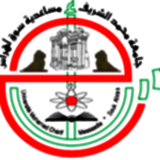Center of Academic Publications |
evaluation de la pollution des sols par les métaux lourds de quelques biotopes du nord-est algerien par l'utilisation d'un bio-indicateur animalhttps://www.univ-soukahras.dz/en/publication/article/2724 |
| Zohra Guessasma (2021) evaluation de la pollution des sols par les métaux lourds de quelques biotopes du nord-est algerien par l'utilisation d'un bio-indicateur animal. university of souk ahras |

Download Article
Abstract
-
Abstract
In this study, we are interested in the assessment and impact of soil pollution of some biotopes in North-East Algeria, using a terrestrial bioindicator: Helix aspersa; very abundant snail in the six study sites (Sidi Amar, El Hadjar, Séraidi, Taoura, Chaabani and Drean).
The physico-chemical analysis of the soils indicates that the soils of the six sites are alkaline water pH (pH > 7.5), generally textured, clay-silty with a high percentage of moisture (37.5 to 75%), except in Sidi Amar (silty-clay texture), unsalted soils, rich in organic matter (> 5%), and limestone: a total limestone type (15-30%), and an active limestone type: very limestone (> 30%). These Soilshavearelatively low porosity (10 to 20%) and low in Chaabani and Drean.
The morphometric parameters: diameter and height of the shell, total weight of the snail, were measured on all samples. The results obtained show respective remarkable deference between these parameters, with a more accentuated growth at the level of the Séraidi and Taoura zone unlike in the other zones.
In terms of doses of metabolites (total proteins, total carbohydrates and total lipids) it was found that there is a significant difference detected which explains the resistance of Helix aspersa to ETMs in particular and to pollution in general.
The determination of biomarkers(CAT, APX, GST,GSH and MDA) in Helixaspersaduring the twoseasons:Winter and Spring, showsa significantdifferencein the enzymatic activity of biomarkers among thesixstudysites, so a significantdecrease in levelsof thesebiomarkershasbeenmarked inthe spring,the season when the snailresumes its physiological activities afterthe winter hibernation,itwillbe exposure to contaminantsmainlyETMexistinginsoil.
For ETMs tests, our results show that there is a significant difference between the six zones during the two seasons ; which explains why the snail Helix aspersa accumulates metallic trace elements according to the concentrations of ETMs existing in the media.
The most abundant metal is total iron (with a high rate at the level of El-Hadjar and low at the level of Seraidi). In addition, these results confirm that Séraidi and Taoura are the least polluted sites,
followed by the sites in increasing order: Drean, Chaabani, Sidi Amar. The El-Hadjar site is the most polluted.
The heavy metal contents are recorded in the following order of abundance: viscera >> feet. Thus, the digestive gland (hepatopancreas) has been recognized as the main storage organ for trace metal elements.
All of our results show that the biological model of the present study Helix aspersa has a very important potential for pollutant accumulation.
Keywords:Pollution:ETMs,Bioindicator,Helixaspersa,Gastropoda,Biomarkers, North-East Algeria.
Information
| Item Type: | Thesis |
|---|---|
| Divisions: |
» Laboratory sciences and technical water and environment » Faculty of Science and Technology |
| ePrint ID: | 2724 |
| Date Deposited: | 2021-09-14 |
| Further Information: | Google Scholar |
| URI: | https://www.univ-soukahras.dz/en/publication/article/2724 |
BibTex
@phdthesis{uniusa2724,
title={evaluation de la pollution des sols par les métaux lourds de quelques biotopes du nord-est algerien par l'utilisation d'un bio-indicateur animal},
author={Zohra Guessasma},
year={2021},
school={university of souk ahras}
}
title={evaluation de la pollution des sols par les métaux lourds de quelques biotopes du nord-est algerien par l'utilisation d'un bio-indicateur animal},
author={Zohra Guessasma},
year={2021},
school={university of souk ahras}
}

 عربي
عربي Français
Français International Students
International Students